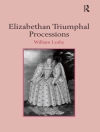’ . . . the greatest contribution to [semiotics] since the pioneering work of C. S. Peirce and Charles Morris.’ —Journal of Aesthetics and Art Criticism
’ . . . draws on philosophy, linguistics, sociology, anthropology and aesthetics and refers to a wide range of scholarship . . . raises many fascinating questions.’ —Language in Society
’ . . . a major contribution to the field of semiotic studies.’ —Robert Scholes, Journal of Aesthetics and Art Criticism
’ . . . the most significant text on the subject published in the English language that I know of.’ —Arthur Asa Berger, Journal of Communication
Eco’s treatment demonstrates his mastery of the field of semiotics. It focuses on the twin problems of the doctrine of signs—communication and signification—and offers a highly original theory of sign production, including a carefully wrought typology of signs and modes of production.
Spis treści
Foreword
Note on graphic conventions
0. Introduction—Toward a Logic of Culture
0.1. Design for a semiotic theory
0.2. 'Semiotics’: field or discipline?
0.3. Communication and/or signification
0.4. Political boundaries: the field
0.5. Natural boundaries: two definitions of semiotics
0.6. Natural boundaries: inference and signification
0.7. Natural boundaries; the lower threshold
0.8. Natural boundaries: the upper threshold
0.9. Epistemological boundaries
1. Signification and Communication
1.1. An elementary communicational model
1.2. Systems and codes
1.3. The s-code as structure
1.4. Information, communication, signification
2. Theory of Codes
2.1. The sign-function
2.2. Expression and content
2.3. Denotation and connotation
2.4. Message and text
2.5 Content and referent
2.6. Meaning as cultural unit
2.7. The interpretant
2.8. The semantic system
2.9. The semantic markers and the sememe
2.10. The KF model
2.11. A revised semantic model
2.12. The model 'Q’
2.13. The format of the semantic space
2.14. Overcoding and undercoding
2.15. The interplay of codes and the message as an open form
3. Theory of Sign Production
3.1. A general survey
3.2. Semiotic and factual statements
3.3. Mentioning
3.4 The prolem of a typology of signs
3.5. Critique of iconism
3.6. A typology of modes of production
3.7. The aesthetic text as invention
3.8. The rhetorical labor
3.9. Ideological code switching
4. The Subject of Semiotics
References
Index of authors
Index of subjects












